#d&d changeling
Photo


Hermitcraft Character Design Event Week 1
Event by @shepscapades
#shepshermitdesign23#fwhip#trafficblr#hermitcraft#mcyt#d&d changeling#pearlescentmoon#pearl as paladin or war cleric#not sure how much I'll be able to do#but excited to participate#I could not pick a singular blorbo
149 notes
·
View notes
Text


Chapter 4 Part 33-34.
Dagger reveal :] sorry for a shorter update, next one will be 4 pages!
Previous
Next
Masterpost
#dungeons and dragons#my art#artists on tumblr#backstory angst#drawings#dungeons & dragons#dnd#ocs#d&d#digital art#dnd character#dnd changeling#らくがき#fae character#fey character#oc#csp#clip studio paint#d&d changeling#fae changeling#changeling#husk dnd#rkgk#ive been wanting to reveal the dagger for over a year now#dnd art
32 notes
·
View notes
Text
EYES // EYE CONTACT
Okay, so Not turtle-y stuff… but this is my first genuine DnD character, a non-binary Changeling Bard who doesn’t care what pronouns are used on them
(My actual “first” chara was a dwarf barbarian used in a single one-shot as practice)


Also, my first ever speedpaint!! I’ve switched drawing programs, and this is my first full drawing on my new program, Ibispaint. I found out speedpaint were actually possible with this app, but I probably messed it up somehow, so it might not work right
WARNING!!!!
There is some quick disturbing imagery during the speedpaint!!! It’s just a mask, but it could still be considered pretty unsettling.
…..Also, if anybody has any name ideas, I’m desperate/lh/nf
#dnd oc#dnd stuff#dnd character#dnd#dnd art#dnd changeling#changeling#d&d changeling#d&d art#d&d character#dungeons and dungeons#dungeons and dragons art
51 notes
·
View notes
Text

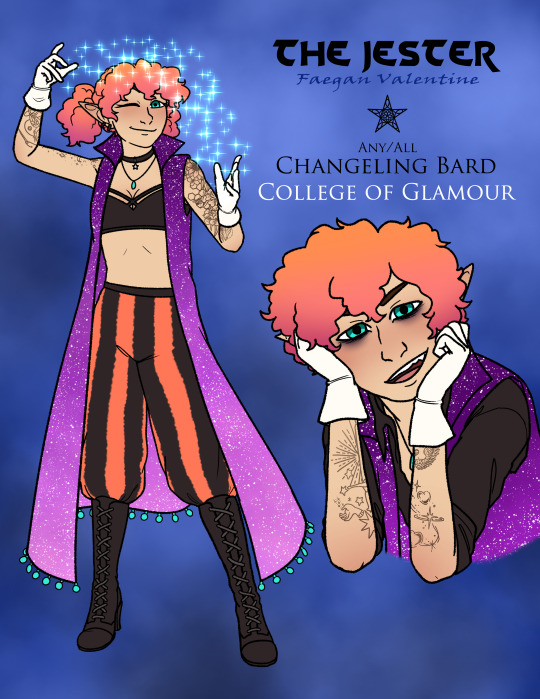
Part two of my Therapy D&D characters! In my session this week we started their first adventure but I kept being like 'what are my spells, i dont know my modifiers' so now I'm making seven 5th level character sheets i guess ^^;;
More dnd chars coming soon
#d&d art#dnd art#d&d character#dnd character#d&d characters#dnd characters#dnd oc#d&d oc#dnd oc art#d&d oc art#dnd wizard#d&d wizard#dnd bard#d&d bard#dnd tiefling#d&d tiefling#d&d changeling#dnd changeling#changeling oc#tiefling oc#tiefling art#divination wizard#college of glamour#wizard oc#bard oc#Premonition#Faegan Valentine#Therapy Dungeon#Ashley Rowan Art#The Herald
70 notes
·
View notes
Text
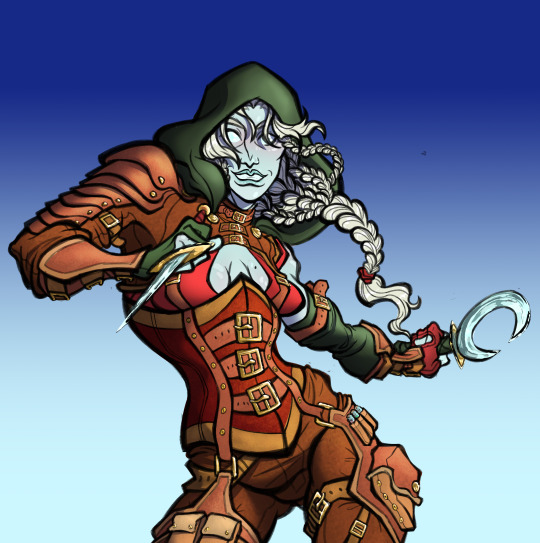
Like Yngve, I want more art of Lamia in the near future from the fabulous @countslimeula. Today I just want to gush about my characters AND encourage you to get some RPG art yourselves! @countslimeula has commissions! I'd one day love to get art of Lamia's sidekick, Allie the Dragonborn, too.
I keep going back and forth on writing stories for Lamia and Yngve. Or, perhaps, one day they'll get to be part of a D&D podcast. (It doesn't HAVE to be D&D. I'm open to other types of RPGs.)
If I'm ever in a position to just organize something myself, I will. I just do not have the time right now.
Lamia Ambler
Pronounced: LAH-mee-uh ahm-blur
Race: Changeling
Class: Rogue
Age: Mid-20s to Early 30s
Alignment: Chaotic Neutral
Pronouns: She/Her/Hers
Lamia and her sidekick, Allie the Dragonborn, recently escaped from prison. Lamia acts as the brains while Allie is the brawn. Lamia's a con artist and thief. She considers herself more intelligent than most people, even in situations where that isn't true. She's smug and her ego is often her downfall. She likes to be perceived as tough as nails, but she's a lot more sensitive than she lets on. It doesn't take much to hurt her feelings.
On the run from the law, she and her accomplice, Allie, are constantly on the move. They steal and con to make ends meet. Due to her ability to shapeshift into any humanoid, Lamia is able to blend into any crowd. She has the skills and brains to take care of herself. It's just that her bloated sense of self-importance always lands her in hot water.
Lamia is loyal to her closest friends, especially Allie.
[Reworking her stats now I know more D&D knowledge]
Abilities:
Shapechanger: Lamia can change her appearance and voice to any Medium sized, humanoid creature she has seen before. The biggest downside is that she will still need to find appropriate clothing and equipment if she plans to deceive others with her changed appearance, and she will still need to act appropriately.
Unsettling Visage. When a creature she can see makes an attack roll against her, she can use her reaction to impose disadvantage on the roll. She must use this feature before knowing whether the attack hits or misses. Using this trait reveals her shapeshifting nature to any creature within 30 feet that can see her. Once she use this trait, she can’t use it again until she finishes a short or long rest.
Languages Spoken: Common, Draconic, and Thieves’ Cant
Weapons: Crossbow, Rapier, Shortsword.
Songs
Opportunities (Let's Make Lots of Money) by Pet Shop Boys
Daisy by Ashnikko
Never Had Nobody Like You M. Ward and Zooey Deschanel
Cops and Robbers by The Hoosiers
Last Night (Beer Fear) by Lucy Spraggan
Thumbs by Sabrina Carpenter
Video Games by Trixie Mattel
Give Them What They Want from Dirty Rotten Scoundrels
Dolls by Bella Poarch
#dnd shenanigans#dnd commission#dnd characters#dnd art#dnd oc#dungeons and dragons character#dungeons and dragons#dungeons and dragons art#dnd character#dnd ocs#dnd oc art#d&d ocs#d&d rp#d&d character#d&d changeling#changeling#Lamia#Lamia Ambler#rpg#rp#roleplay#roleplaying#roleplaying games#oc rpg
10 notes
·
View notes
Photo
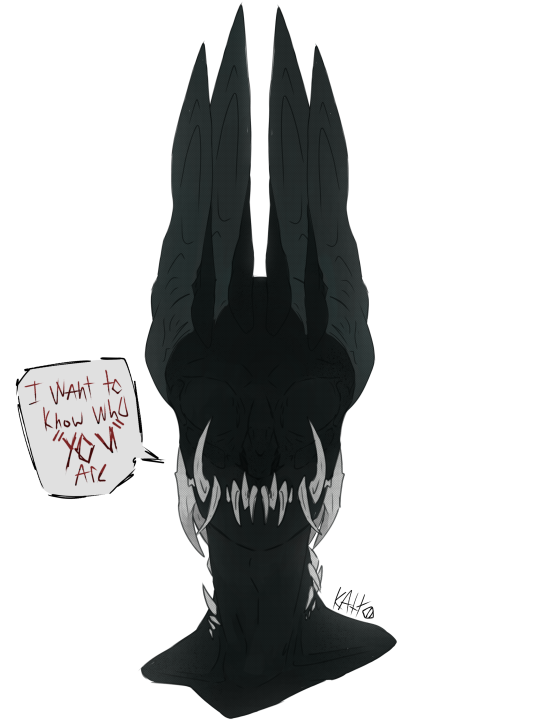
Pov:
You’re a warforged named Atlas about to get their shit rocked
[Context: Atlas has a demon stuck in his head, and Siau/Sonia being the vessel of Satan would LOVE to know more about the demon.]
………………………ᘛ⁐̤ᕐᐷ
‼️Please reblog‼️
………………………ᘛ⁐̤ᕐᐷ
#dnd#dnd oc#dnd art#d&d#d&d oc#d&d art#oc#oc art#character#character art#dnd character#changeling#dnd changeling#d&d changeling#changeling oc#changeling art#bruh so many tags#apolgoies
7 notes
·
View notes
Text


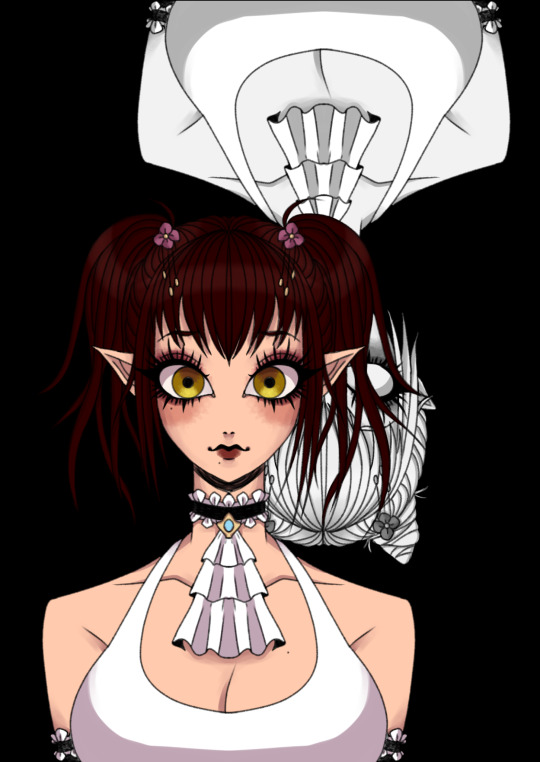

"Who are you, really?"
2 notes
·
View notes
Text
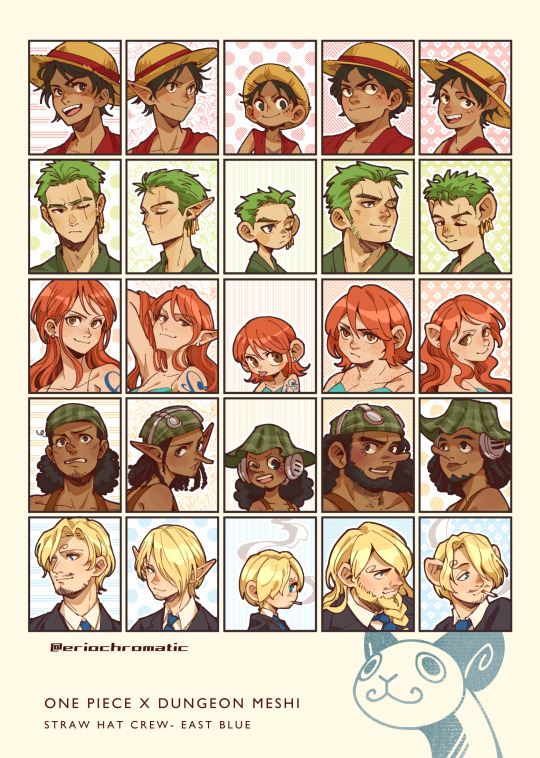
One Piece x Dungeon Meshi 🏴☠️🍖
part 1- luffy, zoro, nami, usopp, sanji
#one piece#dungeon meshi#straw hat pirates#monkey d. luffy#roronoa zoro#nami one piece#usopp one piece#vinsmoke sanji#mugiwara crew#delicious in dungeon#erio art#erio stuff#I wanted to do some one piece characters based off of ryoko kui’s changeling swap art#starting with the east blue five!!
6K notes
·
View notes
Text
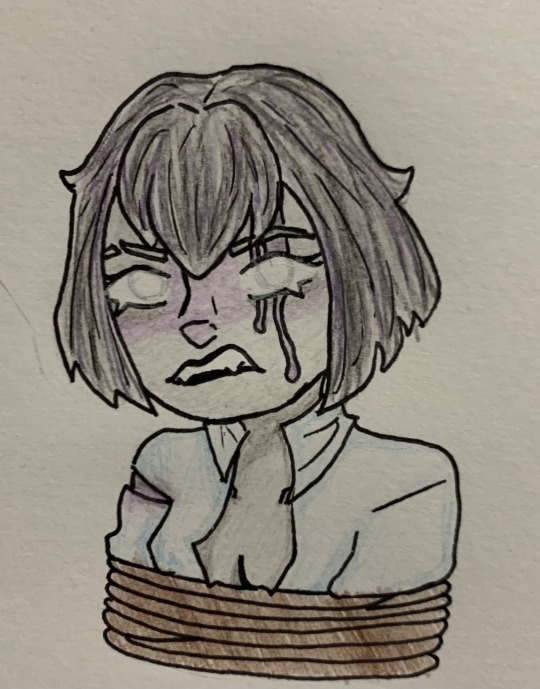
More art of Kay, cause apparently y'all like her
#dnd5e#dungeons and dragons#dnd character#dnd#dnd art#dnd oc#dnd 5e#Kay the Changeling#d&d changeling
0 notes
Text
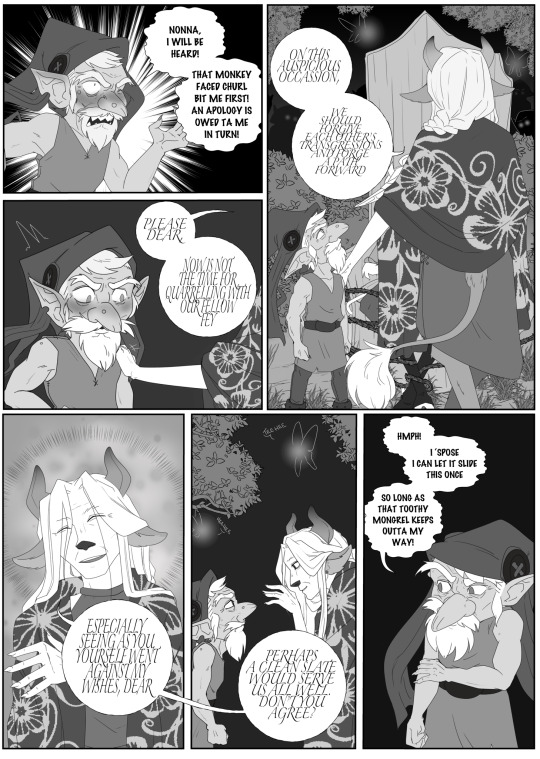
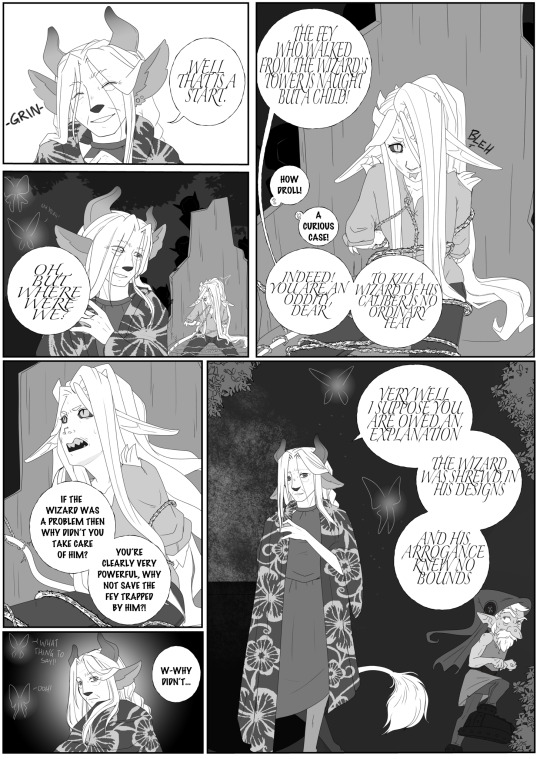

Chapter 4 Part 22-24.
Previous
Next
Masterpost
I’m back!! Multi-page updates from now :D
#digital art#dungeons and dragons#my art#d&d#artists on tumblr#ocs#dnd#dungeons & dragons#backstory angst#husk dnd#dnd changeling#fey character#satyr#drawings#oc#fae character#dnd character#d&d changeling#nb characters
39 notes
·
View notes
Photo

An animated ‘‘dragonborn’’ commission!
#dnd#animation#commission#dragonborn#changeling#Rogue#pirate#ive painted them before!! and a changeling animation is so cool :D#soc art#the gif is lower quality than the mp4 but works better for tumblr#i hope to do more of these#Dungeons and Dragons
6K notes
·
View notes
Text

Mine is Human and Half-Elf...hmmmmmmm...kinda tracks.
#dungeons & dragons#dungeons and dragons#d&d#d&d 5e#dnd#dnd 5e#ttrpg#human#elf#halfling#half orc#genasi#half elf#aasimar#tiefling#changeling#dwarf#gnome#dragonborn#memes#meme#funny#lol
494 notes
·
View notes
Text
Cold Iron in folklore, fiction, and RPGs
'Gold is for the mistress—silver for the maid!
Copper for the craftsman cunning at his trade.'
'Good!' said the Baron, sitting in his hall,
'But Iron—Cold Iron—is master of them all!'
— Rudyard Kipling, “Cold Iron”
Folklore

Drudenmesser, or "witch-knife", an apotropaic folding knife from Germany
The notion that iron (or steel) can ward against evil spirits, witches, fairies, etc is very widespread in folklore. You hang a horseshoe over your threshold to deny entry to evil spirits, you carry an iron tool with you to make sure devils won't assault you, you place a small knife under the baby's crib to ward it from witches, and so on. Iron is apotropaic in many many cultures.
In English, we often come across passages that refer to apotropaic cold iron (or cold steel). "All uncouth, unknown Wights are terrifyed by nothing earthly so much as by cold Iron", says Robert Kirk in 1691, which I believe is the earliest example. "Evil spirits cannot bear the touch of cold steel. Iron, or preferably steel, in any form is a protection", says John Gregorson Campbell in 1901.
Words
So what is cold iron? In this context, it’s just iron. The “cold” part is poetic, especially – but not only – if we’re talking about either blades (or swords, weapons, the force of arms) or manacles and the like. It just sounds more ominous. There are “cold yron chaines” in The Fairie Queene (1596), and a 1638 book of travels tells us that a Georgian general (in the Caucasus) vowed “to make the Turk to eat cold iron”.
Green’s Dictionary of Slang defines “cold iron” as a sword, and dates the term to 1698. From 1725 it appears in Cant dictionaries (could this sense be thieves’ cant, originally? why not, plenty of words and expressions started as underworld slang and then entered the mainstream), and from ~1750 its use becomes much more common.

NGram Viewer diagram for 1600-2019.
In other contexts, cold iron is (surprise!) iron that’s not hot. So let’s talk a bit about metallurgy.
Metals

In nature, we can find only one kind of iron that’s pure enough to work with: meteoritic iron. It has to literally fall from the sky. Barring that very rare occurrence, people have to mine the earth for iron ore, which is not workable as is. To separate the iron from the ore we have to smelt it, and for that we need heat, in the form of hot charcoals. Throwing the ore on the coals won’t do much of anything, it’s not hot enough. But if we enclose the coals in a little tower built of clay, leaving holes for air flow, the temperature rises enough to smelt the ore. That’s called a bloomery.

clay bloomery / medieval bloomery / beating the bloom to get rid of the slag
What comes out of the bloomery is a bloom: a porous, malleable mass of iron (that we need) and slag (byproducts that we don’t need). But now we can get rid of the slag and turn the porous mass to something solid, by hammering the hot bloom over and over. And once the slag is off, by the same process we can give it a desired shape in the forge, reheating it as needed. This is called “working” the iron, hence “wrought iron” objects, i.e. forged.

a blacksmith in his forge, with bellows, fire, and anvil (English woodcut, 1603)
This is the lowest-tech version, possibly going back to ~2000 BCE in Nigeria. If we add bellows, the improved air flow will raise the temperature. So smelting happens faster and more efficiently in the bloomery, and so does heating the iron in the forge, making it easier to work with. And that’s the standard process from the Iron Age all through the middle ages and beyond (although in China they may have skipped this stage and gone straight to the next one).
If we make the bloomery bigger and bigger, with stronger and stronger bellows, we end up with a blast furnace, a construction so efficient that the temperature outright melts the iron, and it’s liquified enough to be poured into a mould and acquire the desired shape when it cools off. This is “cast iron”.
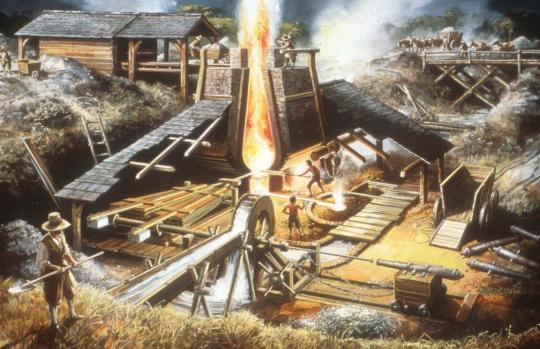
a blast furnace
So in all of this, what’s cold iron? Well, it’s iron that went though the heat and cooled off. (No heat = no iron, all you got is ore.) If it came out of a bloomery, or if it wasn’t cast, it’s by definition worked, hammered, beaten, wrought, and that happened while it was still hot.
Is there such a thing as “cold-wrought” iron? No. In fact, “working cold iron” was a simile for something foolish or pointless. A smith who beats cold iron instead of putting it in the fire shows folly, says a 1694 book on religion, so you too should choose your best tools, piety and good decorum, to educate your children and servants, instead of beating them. When Don Quixote (1605) declares he’ll go knight-erranting again, Sancho Panza tries to dissuade him, but it’s like “preaching in the desert and hammering on cold iron” (a direct translation of martillar en hierro frío).
Minor work can be done on cold iron. A 1710 dictionary of technical terms tells us that a rivetting-hammer is “chiefly used for rivetting or setting straight cold iron, or for crooking of small work; but ’tis seldom used at the forge”. Fully fashioning an object out of cold iron is not a real process – though a 1659 History of the World would claim that in Arabia it’s so hot that “smiths work nails and horseshoes out of cold iron, softened only by the vigorous heat of the sun, and the hard hammering of hands on the anvil”. [I declare myself unqualified to judge the veracity of this statement, let's just say I have doubts.] And there is of course such a thing as “cold wrought-iron”, as in wrought iron after it’s cooled off.
Either way, in the context of pre-20th century English texts which refer to apotropaic “cold iron”, it’s definitely not “cold-wrought”, or meteoritic, or a special alloy of any kind. It’s just iron.
Fiction
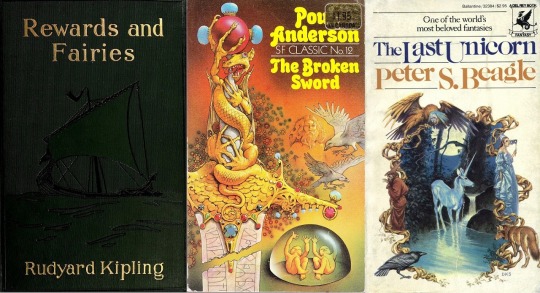
The old superstition kept coming up in fantasy fiction. In 1910 Rudyard Kipling wrote the very influential short story “Cold Iron” (in the collection Rewards and Fairies), where he explains invents the details of the fairies’ aversion to iron. They can’t bewitch a child wearing boots, because the boots have nails in the soles. They can’t pass under a doorway guarded by a horseshoe, but they can slip through the backdoor that people neglected to guard. Mortals live “on the near side of Cold Iron”, because there’s iron in every house, while fairies live “on the far side of Cold Iron”, and want nothing to do with it. And changelings brought up by fairies will go back to the world of mortals as soon they touch cold iron for the first time.
In Poul Anderson’s The Broken Sword (1954), we read:
“Let me tell you, boy, that you humans, weak and short-lived and unwitting, are nonetheless more strong than elves and trolls, aye, than giants and gods. And that you can touch cold iron is only one reason.”
In Peter S. Beagle’s The Last Unicorn (1968) the unicorn is imprisoned in an iron cage:
“She turned and turned in her prison, her body shrinking from the touch of the iron bars all around her. No creature of man’s night loves cold iron, and while the unicorn could endure its presence, the murderous smell of it seemed to turn her bones to sand and her blood to rain.”
Poul Anderson would come back to that idea in Operation Chaos (1971), where the worldbuilding’s premise is that magic and magical creatures have been reintroduced into the modern world, because a scientist “discovered he could degauss the effects of cold iron and release the goetic forces”. And that until then, they had been steadily declining, ever since the Iron Age came along.
There are a million examples, I’m just focusing on those that would have had a more direct influence on roleplaying games. However, I should note that all these say “cold iron” but mean “iron”. Yes, the fey call it cold, but they are a poetic bunch. You can’t expect Robin Goodfellow’s words to be pedestrian, now can you?
RPGs

And from there, fantasy roleplaying systems got the idea that Cold Iron is a special material that fey are vulnerable to. The term had been floating around since the early D&D days, but inconsistently, scattered in random sourcebooks, and not necessarily meaning anything else than iron. In 1st Edition’s Monster Manual (1977) it’s ghasts and quasits who are vulnerable to it, not any fey creature. Devils and/or fiends might dislike iron, powdered cold iron is a component in Magic Circle Against Evil, and “cold-wrought iron” makes a couple of appearances. For example, in AD&D it can strike Fool’s Gold and turn it back to its natural state, revealing the illusion.
Then Changeling: The Dreaming came along and made it a big deal, a fundamental rule, and an anathema to all fae:
Cold iron is the ultimate sign of Banality to changelings. ... Its presence makes changelings ill at ease, and cold iron weapons cause horrible, smoking wounds that rob changelings of Glamour and threaten their very existence.... The best way to think about cold iron is not as a thing, but as a process, a very low-tech process. It must be produced from iron ore over a charcoal fire. The resulting lump of black-gray material can then be forged (hammered) into useful shapes.
— Changeling: The Dreaming (2nd Edition, 1997)
So now that we know how iron works, does that description make sense? Well, if we assume that the iron ore is unceremoniously dumped on coals, it does not. You can’t smelt iron like that. If we assume that a bloomery is involved even though it’s not mentioned, then yes, this is broadly speaking how iron’s been made since the Iron Age, and until blast furnaces came into the picture. But the World of Darkness isn’t a pseudo-medieval setting, it’s modern urban fantasy. So the implication here is that “cold iron” is iron made the old way: you can’t buy it in the store, someone has to replicate ye olde process and do the whole thing by hand. Now, this is NOT how the term “cold iron” has been used in real life or fiction thus far, but hey, fantasy games are allowed to invent things.
Regardless, 3.5 borrowed the idea, and for the first time D&D made this a core rule. Now most fey creatures had damage reduction and took less damage from weapons and natural attacks, unless the weapon was made of Cold Iron:
“This iron, mined deep underground, known for its effectiveness against fey creatures, is forged at a lower temperature to preserve its delicate properties.”
— Player’s Handbook (3.5 Edition, 2003)
Pathfinder kept the rule, though 5e did not. And unlike Changeling, this definition left it somewhat ambiguous if we’re talking about a material with special composition (i.e. not iron) or made with a special process (i.e. iron but). The community was divided, threads were locked over this!
So until someone points me to new evidence, I’ll assume that the invention of cold iron as a special material, distinct from plain iron, should be attributed to TTRPGs.
#long post#cold iron#d&d#Changeling: The Dreaming#World of Darkness#Peter S. Beagle#The Last Unicorn#Rudyard Kipling#Poul Anderson#The Broken Sword#how to rogue#pathfinder#rogues in fiction#Operation Chaos#rogue superstitions#words of the trade#thieves' cant#ad&d#d&d history#1st edition#fey#3.5#fluff#trs
335 notes
·
View notes
Text

Meet Cyr (they/them), the changeling ranger of the party for a D&D game that I run for my friends on Saturday! They were part of a Feywilds changeling circus before choosing to help lost children in the fey lands get back to their homes in the material plane. They belong to my best friend @kered555
instagram - twitter - patreon - more
#changeling#dnd#dnd 5e#dnd oc#dnd character#character design#ttrpg#dnd changeling#ranger#dnd ranger#ttrpg community#dungeons and dragons#d&d#dnd art#dnd artist#ocs
258 notes
·
View notes
Text

Would you tell the fae your name...?
#hana's ocs#digital#dnd#dnd oc#dungeons and dragons#changeling#changeling oc#Feo#d&d#d&d changeling#d&d oc
3 notes
·
View notes